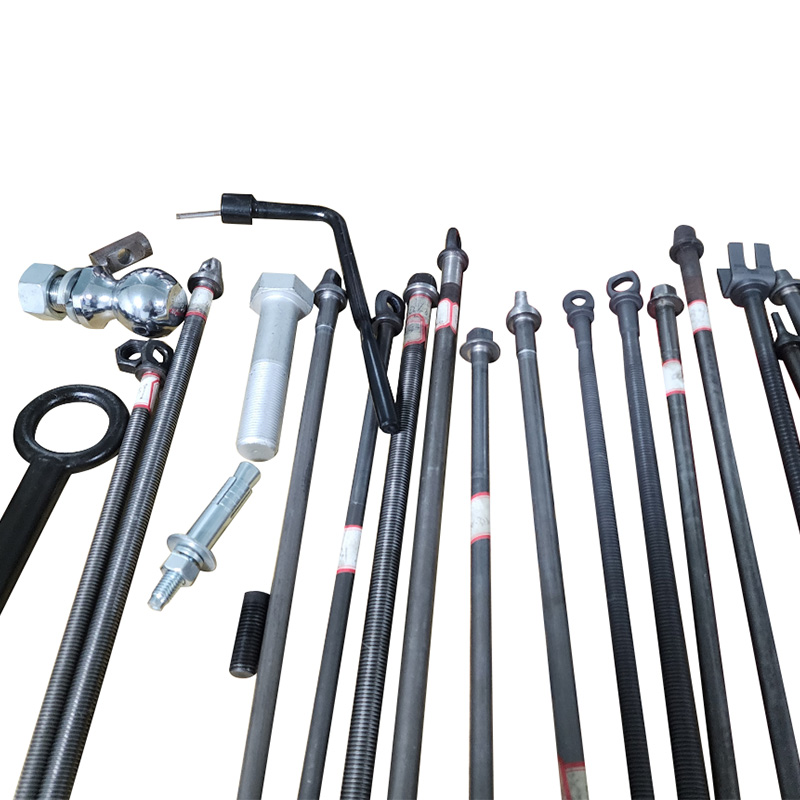Trapezoidal lead screws (often called ACME screws) are fundamental mechanical components converting rotary motion into precise linear movement. While less efficient than ball screws, their robustness, simplicity, cost-effectiveness, and self-locking capability make them indispensable in many industrial and precision applications.
Content
Key Features & Why Choose Them
-
Thread Geometry:
-
Characterized by a 30° thread angle (standard metric) or 29° angle (ACME - US standard).
-
Flatter thread crests/roots vs. V-threads, enabling higher load distribution and better wear resistance.
-
-
Core Advantages:
-
High Load Capacity: Robust design handles significant static and dynamic loads (axial thrust).
-
Self-Locking Capability: Inherent friction typically prevents back-driving under static loads (critical for vertical/hanging applications).
-
Simplicity & Cost: Fewer components, easier manufacturing, and significantly cheaper than ball screws.
-
Durability & Clean Operation: No recirculating balls = no risk of jamming from debris (ideal for dirty environments like sawmills, food processing).
-
Smooth & Quiet: Lower noise generation compared to ball screws at moderate speeds.
-
Damping: Friction provides inherent vibration damping.
-
Material Choices: Screw & Nut
-
Screw Materials:
-
Carbon Steel (C45, AISI 1045): Most common, cost-effective. Requires surface hardening or coating for wear resistance.
-
Alloy Steel (AISI 4140, 4340): Higher strength, better response to heat treatment. Used for demanding applications.
-
Stainless Steel (A2/304, A4/316): Essential for corrosion resistance (food, marine, chemical). Lower strength than carbon steel, higher friction.
-
-
Nut Materials:
-
Bronze (SAE 841, C93200): Industry standard. Excellent wear resistance, low friction against steel, good conformability. Often oil-impregnated.
-
Cast Iron: Economical, good wear properties, used in heavy machinery. Higher friction than bronze.
-
Engineering Plastics (POM, Nylon, PTFE composites): Lightweight, corrosion-proof, low friction, quiet. Lower load capacity & temperature limits. Ideal for light-duty/clean environments.
-
Bronze-Filled PTFE: Combines low friction with good wear resistance.
-
Critical Performance Factors & Trade-offs
-
Efficiency (η):
-
Typically 20-40% due to sliding friction (vs. 90%+ for ball screws).
-
Formula:
η = tan(λ) / tan(λ + φ)(λ = Lead Angle, φ = Friction Angle). -
Improving Efficiency: Reduce friction coefficient (lubrication, material pairing), increase lead angle (multi-start threads).
-
-
Backlash:
-
Clearance between screw and nut threads. Essential for smooth operation but reduces precision.
-
Controlled by: Precision manufacturing, adjustable split nuts, preloaded dual nuts.
-
-
Wear & Life:
-
Primary failure mode is thread wear. Life depends on:
-
Load & Speed (PV limit - Pressure x Velocity)
-
Material Pairing
-
Lubrication: CRITICAL! Reduces friction, wear, and heat. Use high-pressure grease or oil suitable for the environment.
-
Contamination Protection (Wipers, Bellows)
-
-
-
Self-Locking vs. Back-Driving:
-
Self-locking occurs when
λ < φ. Essential for safety in vertical axes. -
Warning: Efficiency gains (e.g., via lubrication) can reduce friction angle (φ) and potentially eliminate self-locking! Verify carefully.
-
Common Standards
-
Metric Trapezoidal: DIN 103 (Profile), DIN 513 (Tolerances). Common pitches: Tr8x1.5, Tr10x2, Tr12x3, Tr16x4, Tr20x4, etc.
-
ACME (Imperial): ASME B1.5. Common sizes: 1/2"-10, 3/4"-6, 1"-5, etc. (Diameter-TPI).
-
Multi-Start Threads: Increase lead without increasing pitch (faster travel per revolution, higher efficiency, but reduced self-locking tendency).
Key Applications (Where They Excel)
-
Vertical Lifting Systems: Jacks, scissor lifts, actuators (relying on self-locking).
-
Heavy Industrial Machinery: Machine tools (older designs), presses, stamping machines, conveyors.
-
Harsh Environments: Sawmills, mining equipment, agricultural machinery (debris tolerance).
-
Precision Positioning (Cost-Sensitive): 3D printers (lower-end), lab equipment, optical stages (with preloaded nuts).
-
Manual Operation: Clamping devices, valve actuators, manual positioning stages.
Selection Guide: Key Questions
-
What are the axial static/dynamic loads? (Determines screw diameter, material strength).
-
What speed (RPM) and linear velocity (m/s) are required? (Impacts efficiency, heat generation, wear - check PV limits).
-
Is precision or minimal backlash critical? (Dictates thread quality, need for preloading).
-
Is self-locking required? (Crucial for vertical/hanging loads - impacts lead choice and lubrication).
-
What is the operating environment? (Corrosive? Dirty? High temp? - Determines material/lubricant/sealing).
-
Duty Cycle? (Continuous operation needs robust lubrication/cooling).
-
Cost Target? (Trapezoidal is cheaper than ball screws, but bronze nuts add cost vs plastic).
Installation & Maintenance Best Practices
-
Alignment: MISALIGNMENT IS A KILLER. Use flexible couplings, ensure precise mounting of supports/bearings.
-
Thrust Bearings: Must be used to handle axial loads, sized appropriately. Radial bearings support screw weight.
-
Lubrication:
-
Select correct type (grease for moderate speed/duty, oil for high speed/continuous duty).
-
Implement lubrication ports/systems.
-
Establish a strict re-lubrication schedule.
-
-
Contamination Control: Use wipers/scrapers and protective bellows where dust/chips/swarf are present.
-
Avoid Over-Travel: Use limit switches to prevent nut from running off screw ends.
Trapezoidal vs. Ball Screws: When to Choose Which?
-
Choose Trapezoidal Lead Screws When:
-
Cost is a major driver.
-
Self-locking is essential.
-
Very high static loads or shock loads are present.
-
Environment is dirty or lubrication is infrequent.
-
Moderate precision/speed is sufficient.
-
Noise needs to be minimized.
-
-
Choose Ball Screws When:
-
High efficiency (>80%) is required (reducing motor size/heat).
-
High speeds or rapid cycling are needed.
-
High precision and minimal backlash are critical.
-
Back-driving is acceptable or desired.
-
Budget allows for higher cost.
-

Conclusion: Trapezoidal lead screws remain vital components offering unmatched simplicity, durability, and cost-effectiveness for linear motion under demanding conditions. Understanding their strengths (load, self-lock, robustness), limitations (efficiency, wear), and proper selection/installation practices (alignment, lubrication, PV limits) is key to successful implementation. Always consult manufacturer catalogs and technical data for specific sizing, load ratings, and material compatibility for your application.

 English
English 中文简体
中文简体 Español
Español русский
русский عربى
عربى








